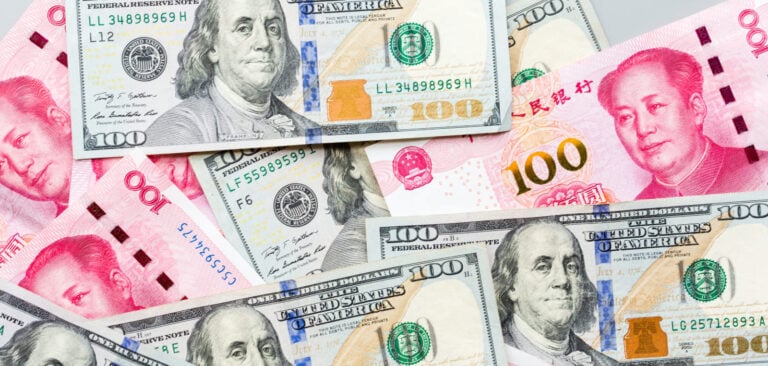Whether you’re a brand selling DTC on Amazon or a distributor reselling a product with a Minimum Advertising Pricing (MAP) policy, you might be hitting a major roadblock on Amazon:
Getting undercut by sellers violating MAP policies.
Or worse, losing your Buy Box positions. 😬
MAP policy violations are a real problem for growing brands and distributors who are playing by the rules. And even though these violations happen on the Amazon platform, it’s up to you to enforce MAP.
Here’s what you need to know about MAP pricing, plus the latest tips to protect your profitability on Amazon.
Minimum Advertised Pricing on Amazon
- What is a Minimum Advertised Price?
- Benefits of a MAP Policy
- How Do You Set a MAP Price?
- What Is a MAP Violation?
- 7 Tips and Tools to Enforce MAP Pricing on Amazon
- Reclaim Your Balance Sheet with Minimum Advertising Pricing Strategies
What Is a Minimum Advertised Price?
The Minimum Advertised Price (MAP) is the lowest price a third-party seller can advertise a product for, as agreed upon with the manufacturer. The idea is to help prevent the price wars that inevitably happen when sellers undersell the Manufacturer’s Suggested Retail Price (MSRP).
MAP pricing benefits both the manufacturer and the seller, but it does take some work on the brand side to implement an effective policy.
MAP vs. MSRP
The differences between MAP and MSRP pricing involve flexibility and plain old numbers. The MSRP is always higher than the MAP, and it’s geared more toward the consumer than the seller. It’s a reference point that gives consumers an idea of the product’s value, and a seller can set a lower price if they want.
Meanwhile, the MAP is more strict, and violating it can have serious consequences for the distributor.
For example, if a sweater has an MSRP of $120, a third-party seller could price it at $90 and advertise a 25% savings. But if the manufacturer has assigned the sweater a MAP of $100, the seller can’t advertise it for $90.
Note that the seller could still sell the sweater for $90 — they just can’t advertise it.
Why Is a MAP Pricing Policy Important?
Whether you’re a manufacturer or a seller, you probably know this already:
As long as customers are getting the best deals and keep coming back, Amazon is happy.
In other words, if you’re being undercut by other sellers, don’t count on Amazon to help you. Instead, take your business into your own hands by implementing a solid pricing policy.
However, the policy by itself isn’t enough. You also need strategies to enforce it.
Experts like Bill Johannesen, founder of Vision Werks Consulting, and Anthony Capozzoli, Amazon expert and financial strategies designer, emphasize the importance of ensuring you have the means to enforce your pricing policy before telling sellers you’ll be holding them accountable.
In the podcast episode “Why a Pricing Policy Can Make or Break Your Brand Integrity,” Bill and Anthony explain that, “Implementing a MAP policy is either the best thing you ever did for your brand or the worst. There’s no middle ground on this.”
If you can follow through on it, a strong MAP policy helps protect your brand and deepen trust with your retail partners. But fail to enforce it, and your efforts could backfire.
“Your pricing policy sets expectations, tells your sellers what to do with your products, and defines how you’ll respond to violations. It lays out the plays. But you still have to execute them. If you don’t follow the playbook, your retail partners won’t be able to take you seriously.”
How Does a MAP Policy Work?
A Minimum Advertised Price Policy:
- Sets a minimum price for each product resellers can advertise for
- Describes specific ways a reseller can violate the policy
- Outlines the repercussions for resellers if they violate the policy
The bottom line is that implementing a MAP policy is pivotal to maintaining the value of your products in a competitive market. If you’re selling on Amazon or other marketplaces, getting your pricing policy right will prove crucial as you scale.
Benefits of a MAP Policy
A clear and enforceable MAP pricing policy benefits all parties — manufacturers, distributors, and online retailers — by:
- Preventing sellers from undercutting each other (and you) with super low prices
- Facilitating fair, competitive pricing among retailers
- Preserving your brand’s values in the eye of the final customer
- Protecting small third-party sellers’ profit margins from price erosion
- Preventing price disparity that can make your customers think you’re taking advantage
Enforcement starts with a formal MAP agreement. This helps resellers understand exactly what’s expected of them — and what will happen if they don’t meet those expectations.
How Do You Set a MAP Price?
When deciding on a MAP price, don’t act too fast. Do your research first.
Here are a few best practices to keep in mind when setting a MAP price:
- Consider your profit margins: Be sure to set a minimum price that still allows resellers to make reasonable profits — after all, they’re in it to make money, too!
- Consider the current average online price: To get a realistic average price per product, monitor your product prices for at least 60 days before locking in the MAP price.
- Only apply MAP to your top products: Considering the robust effort needed to enforce MAP policies, focus on applying it to your best-selling products. Allowing sellers to use discounts for products that don’t sell well can be an effective sales strategy.
What Is a MAP Violation?
A MAP violation happens when a reseller advertises a product at a price below the minimum agreed price set in your agreement.
What constitutes “advertising”? This can be a tricky question, but in general, it’s any widespread, public communication about the price. Storewide flash sale with everything 25% off? That’s advertising and a MAP agreement applies.
Simply listing a product at the price you’re selling it for without highlighting a discount? That’s just communicating the price to the consumer and a MAP policy likely doesn’t apply.
Does Amazon Enforce MAP?
In a word: No.
Amazon doesn’t enforce MAP because, quite frankly, Amazon doesn’t care about MAP.
Amazon’s primary goal is to be as profitable as possible — just like every other online marketplace. So if you look to Amazon for support enforcing your MAP agreement, you’re not going to find it.
Fortunately, you can still use some practical strategies to stand up for your brand and enforce your agreement directly with sellers.
7 Tips and Tools to Enforce MAP Pricing on Amazon
As mentioned, enforcement is everything when it comes to MAP pricing.
Start with these practical tips and tools to protect your brand on Amazon.
1. Set Up Your MAP Agreement
First, make sure you have a solid MAP agreement in place.
Your agreement should include a:
- Minimum price for each of your best sellers
- List of pricing violations
- Clear consequences sellers will face if they violate the agreement
Need some sample language to get started? Check out these examples, then connect with a certified legal professional to make sure you’ve covered your bases.
2. Monitor MAP with an Automated Tool
The right e-commerce tech stack can save you a ton of time, and that’s also true when it comes to monitoring MAP pricing violations on Amazon.
Use an automated MAP monitoring tool like Mapptrap, Red Points Seller Tracking software, or Prowl from PriceSpider, to keep a close eye on MAP without sacrificing company time and resources.
3. Create Processes for Penalizing Repeat Offenders
Get serious about penalizing repeat offenders by creating a process to support your MAP agreement.
You’ll need to integrate this process into your daily operations. But once you standardize it, it shouldn’t take more than a few minutes of your time.
Here’s how:
- Craft a “warning” messaging template you can quickly revise and send to any reseller in violation of the MAP agreement. Be sure to reiterate the importance of respecting MAP to avoid getting banned from selling your products.
- Set aside time every morning to identify all resellers with MAP violations and send them the warning message.
- If a reseller still doesn’t respect the policy agreement, send one last warning before banning them.
- Rinse and repeat.
4. Register Your Brand on Amazon
While not technically created for MAP policy enforcement, Amazon Brand Registry gives you access to advanced reporting tools that can help you have more control over your product listings across the entire platform. (Plus, it comes with some excellent perks, like the ability to create an Amazon Storefront.)
By registering your brand with Amazon Brand Registry, you can:
- Spot, flag and take action against unauthorized sellers and counterfeiters
- Detect any trademark infringements by resellers
- Restrict the total number of authorized sellers that can sell your brand’s products
- Require potential sellers to submit invoices to sell your product so you can easily identify who’s supplying the inventory
Note: To sign up for Amazon Brand Registry, you’ll need a registered trademark.
5. Limit the Number of Retailers That Sell Your Product
It’s easy to miss MAP violations when an unlimited number of retailers can sell your product.
Capping the number of resellers can help you quickly identify who violates your policies.
6. Serialize Your Products
If you have the funds to redesign your packaging or product manufacturing process, consider adding product serial numbers to your products to help track down violators on Amazon.
When you notice a seller is below MAP, you can test-buy the product to check the serial number against the shipments that were sent out. This will help you figure out which distributor received the product.
7. Openly Communicate Your MAP Policy with Retailers
At the end of the day, communication is the best tool in your arsenal to build trust and relay expectations to your resellers.
Be sure to openly communicate your MAP policy with retail partners to help them understand how your policy will help protect both your brand’s interests and theirs. Come at it from a place of win-win.
Protect and Scale Your Brand with SellersFi
An intentional MAP strategy isn’t a nice-to-have. If you want to stay ahead of the competition and remain profitable as you scale, it’s a must.
At SellersFi, we’re changing the way brands scale by providing fast, flexible e-commerce funding solutions purpose-built for every growth scenario.
Learn more about our complete suite of financial solutions custom-built for e-commerce, or explore our growing library of resources for Amazon sellers. Or, get started now with a free SellersFi account.



